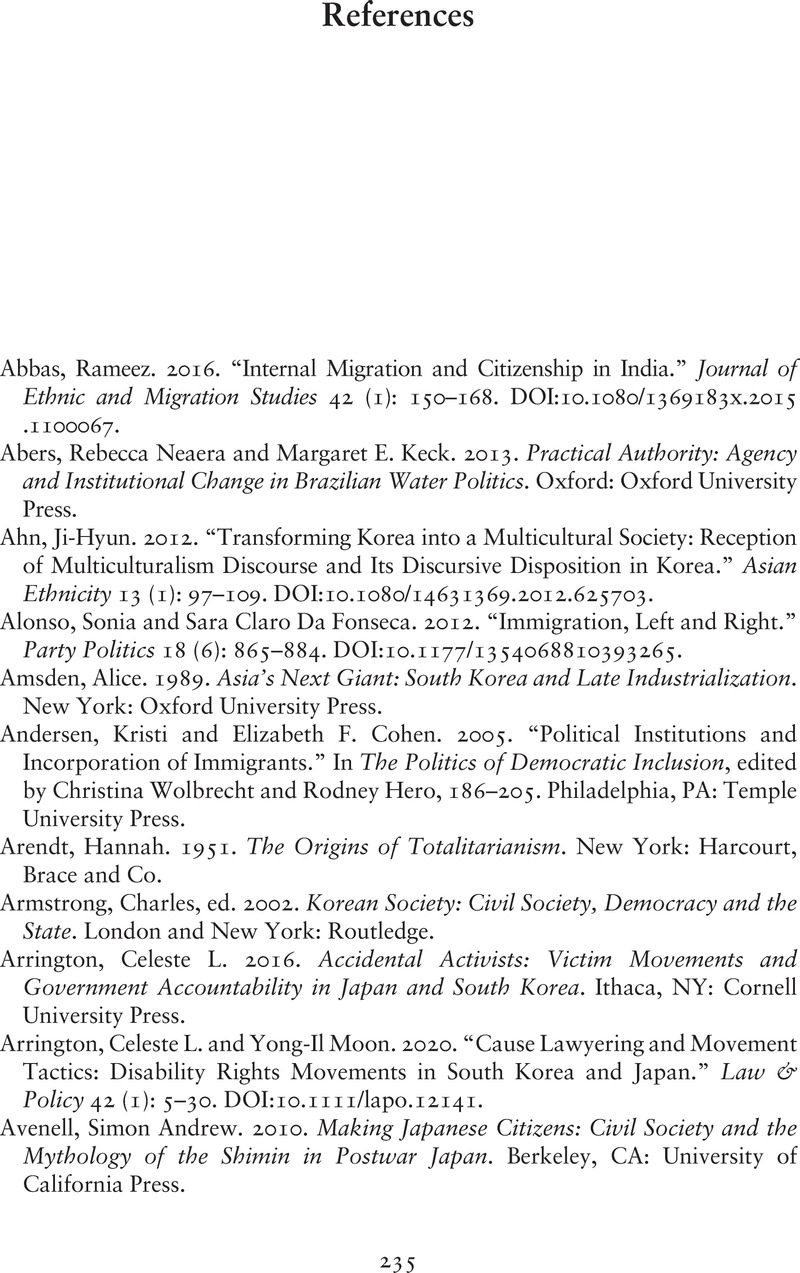Book contents
- Immigrant Incorporation in East Asian Democracies
- Immigrant Incorporation in East Asian Democracies
- Copyright page
- Dedication
- Contents
- Figures
- Tables
- Acknowledgments
- Conventions and Abbreviations
- Introduction
- 1 How Civic Legacies Shape Immigration Politics
- 2 Constructing Developmental Citizens in East Asia
- 3 Civic Legacies and Immigrant Incorporation in East Asian Democracies
- 4 “I Can’t Be Tanaka”
- 5 Marriage and Migration
- 6 Multiculturalism with Adjectives
- Epilogue
- Book part
- References
- Index
- References
References
Published online by Cambridge University Press: 24 September 2020
- Immigrant Incorporation in East Asian Democracies
- Immigrant Incorporation in East Asian Democracies
- Copyright page
- Dedication
- Contents
- Figures
- Tables
- Acknowledgments
- Conventions and Abbreviations
- Introduction
- 1 How Civic Legacies Shape Immigration Politics
- 2 Constructing Developmental Citizens in East Asia
- 3 Civic Legacies and Immigrant Incorporation in East Asian Democracies
- 4 “I Can’t Be Tanaka”
- 5 Marriage and Migration
- 6 Multiculturalism with Adjectives
- Epilogue
- Book part
- References
- Index
- References
Summary

- Type
- Chapter
- Information
- Immigrant Incorporation in East Asian Democracies , pp. 235 - 254Publisher: Cambridge University PressPrint publication year: 2020

